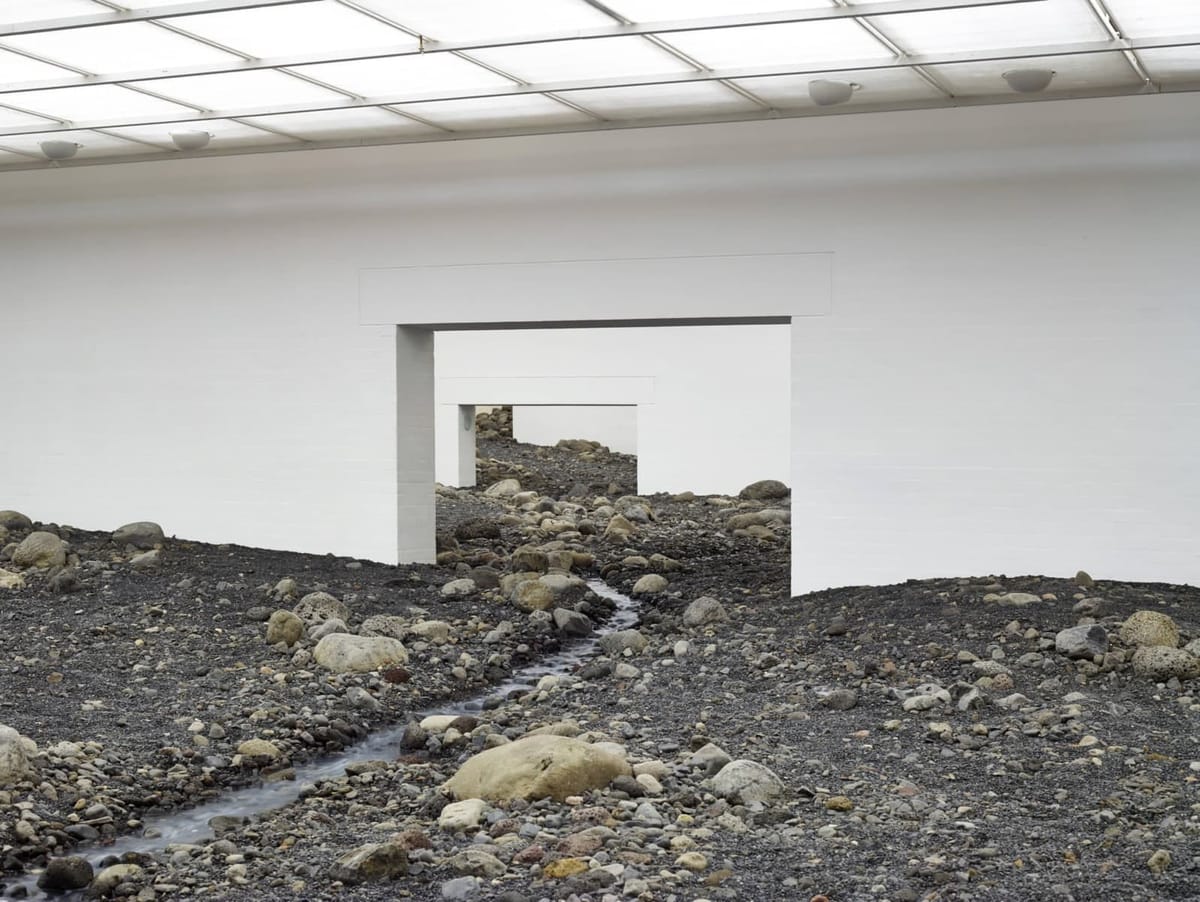Are You Experienced?
A new book reminds designers that all we have is each other and a world of possibilities

Hi everyone,
This week’s podcast is with the cofounders of Longform Editions, an experimental-music label based in Sydney. But even if you don’t listen to a single release, there’s much to enjoy in the discussion of their egaliatarian ethos, emotional sustainability, and the value of curatorial vision in an algorithmic world. You can listen or read a link-filled transcript here.
Below, a consideration of a new book about experience design that argues “all designs are experiences.” So, tell me: what experiences have you “designed” lately that have been successes, that have brought you closer to the people they were designed for?
Love all ways,
Brian
Are You Experienced?
Abraham Burickson’s new book, Experience Design: A Participatory Manifesto, talks to you. At the end of the introduction, in large type, it beckons: “Come, then. Let us begin.” On a similar bright-green background, one page asks, “How did you come into possession of this book?” A third spread teases: “The new page. After you turn this page, it will never be new again.”
Burickson, an artist and writer who cofounded Odyssey Works, which creates bespoke performances for audiences of one, is leading by example. This book is not a container for a linear narrative; in fact, interspersed throughout its pages are step-by-step instructions—a recipe, if you will—for preparing a meaningful meal for one of your friends. Toward the end is a diagram that visualizes dozens of connections between its chapters. It is an experience, one its readers will engage with variously. (Toward the beginning, I wrote my answers to its questions in the margins; I have yet to prepare anyone a meal.)
The manifesto hinted at in the subtitle is short and to the point: “All designs are experiences. All we have are experiences.” But it suggests a profound shift in how we conceive of the act of design: rather than create things; rather than elicit specific, repeatable interactions; rather than think of our creations as standalone encounters, experience designers “engage with unpredictability and the unknown, partnering with their audiences to generate possibility and relationality.” Further: “Experience designers begin with the experience they wish to create and work backward from there.”
Its short chapters address empathy, how we frame things, world-building, the pervasiveness of narrative—subjects and ways of working familiar to designers but rarely pulled together in this way. It is less manifesto than primer, with examples drawn from the realms of art, performance, and theater; lists that spell out some chapters’ key ideas (“three levels of immersion,” “four elements of a world”); and a welcoming, instructive-but-not-academic tone that repeatedly circles back to its key idea. Experience Design reminds me of Rob Walker’s The Art of Noticing or, with its square format and its use of diagrams, Austin Kleon’s Steal Like an Artist.
As an employee of a design studio, though, I had some difficulty applying Experience Design’s lessons to the projects we’ve undertaken. Perhaps somewhat crassly, I kept thinking about cost and scale, since I’ve witnessed how often “begin with an experience you wish to create and work backward” is an exercise in “value engineering” or “cutting scope.” It’s one thing to have the resources to create a free, private social club in San Francisco as a kind of art performance—to take one example from its pages—and another to give up on your preferred materials because of supply-chain issues or fluctuating prices. In this regard, a two-page list of projects that yielded impactful experiences, at the end of the book, is helpful—and I wish Burickson had expanded upon some of them in more detail. Burickson’s framework does, though, give me useful ways to think about experiences that feel inconsiderate or hollow: the way AI companies are presently defaulting to texting-like chat interfaces, say, or the MSG Sphere in Las Vegas.
And if I scale things down to experiences crafted for individuals, as Burickson does in his own Odyssey Works performances, lessons abound. This book taught me, for example, how I screwed up celebrating my wife’s recent birthday. Sure, I got thoughtful gifts, booked her and a friend visiting from New York a reservation at a great new restaurant, and left fresh flowers and a nice bottle of white on our dining table that day. But I did this haphazardly: I gave her one gift a month early and forgot another one until two days later. I didn’t wrap either of them. I was fulfilling my responsibilities but not designing an experience. (Sorry, Jules.) If experience design, as a concept, is “not so much a design methodology … or an artistic discipline as it is an approach to making,” I’ll start small, practice now, and look forward to the “possibility and relationality” we can create together next year.
🔗 Good links
- 🗺️ Love Letters to Places I’ll Never Meet, by Elan Ullendorf
- 📍 A Map Inside, by Ana Lucía González Paz
- 🚗 A love letter to perhaps my favorite film, Abbas Kiarostami’s Taste of Cherry, hidden in a celebration of its American distributor
- 📏 Kwong von Glinow, a sharp young architecture firm in Chicago, on the importance of model-making to its work
- 📸 A long and insightful interview with Liz Deschenes, one of my favorite artists, who has a new show on view now in New York City





